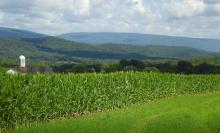Eight Pennsylvania Counties Join Forces to Improve Regional Connectivity
Local officials in eight mostly-rural counties in southwest Pennsylvania are combining efforts to determine first, what connectivity is available and, second, what can be done to improve it.
Seeking Updated Information
Westmoreland, Fayette, Cambria, Somerset, Blair, Bedford, Huntingdon, and Fulton counties have been working with consulting firm Design Nine to develop a survey to share with residents in the region. The Regional Broadband Task Force, established by the Southern Alleghenies Planning & Development Commission (SAP&DC), gathered limited data in the past. They estimate that six percent of folks in the region live in places without wired broadband Internet access.
An earlier study determined that:
...2.3 percentage of the 354,751 residents fall below that level of service [25 Mbps upload and 3 Mbps download]. About 1.6 percentage of Blair County’s 123,842 population and 2.2 percentage of Cambria County’s 134,550 population are lacking that basic level of connectivity. At the other end of the spectrum, 55.2 percentage of Fulton County’s 14,506 residents are without the service.
ARC Funds
Funding for the study comes from the Appalachian Regional Commission (ARC). The Task Force received $50,000 from ARC and the member counties contributed a matching $50,000 for the study. They began looking for a firm to help develop the study last fall and chose Design Nine hoping to determine:
- Level of service being provided; the needs of local businesses and the reliability of the current services being provided;
- An inventory of broadband assets already in place;
- An assessment community broadband requirements for bandwidth needs;
- Determine best technologies to meet the coal impacted community needs; and
- Cost estimates for different deployment strategies
Businesses Want More in Westmoreland



